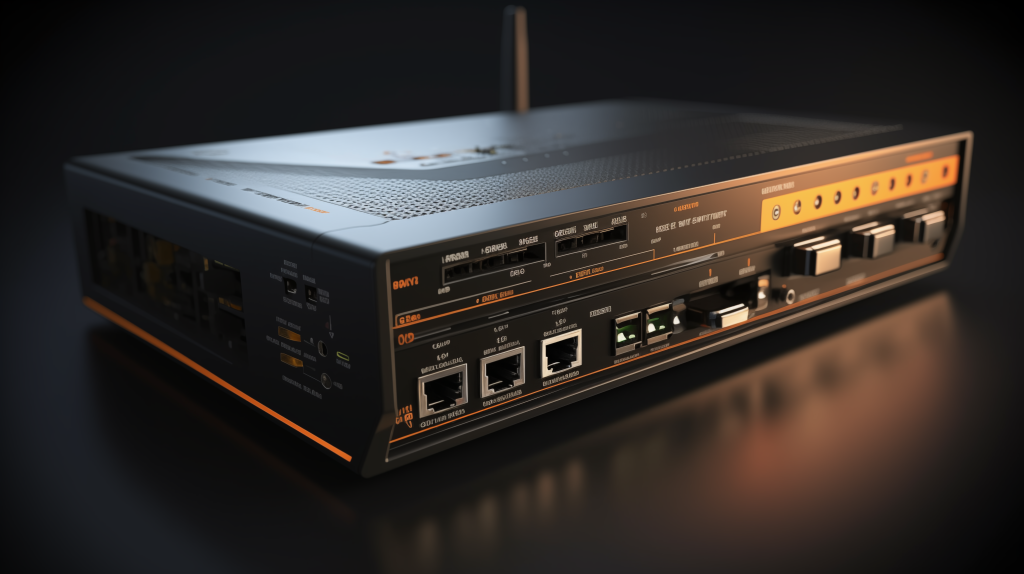Ever wondered how to find the MAC address of your device? Whether you’re troubleshooting a network issue or setting up new hardware, knowing the MAC address is essential. The MAC address (Media Access Control) is a unique identifier for network interfaces, and it plays a crucial role in your device’s ability to connect to the internet or a local network.
At Nimble Nerds, we know that technology should be simple and stress-free! Call us to speak with our friendly receptionist, and we’ll have a tech expert call you back in about 30 minutes—without any obligation. We’re here to provide fast, reliable advice and service!
How to Find MAC Address on Windows: Quick and Easy Methods
Finding your MAC address on a Windows computer can be a simple task once you know where to look. Whether you’re troubleshooting a network issue or setting up a connection filter, having your MAC address handy is essential. Let’s go over a couple of methods that work for both wired and wireless network adapters.
Using Command Prompt: The Old-School Way

One of the quickest ways to find your device’s MAC address is through the Command Prompt. This method gives you all the details you need in just a few steps:
- Open Command Prompt: First, press the Windows key, type “cmd” in the search bar, and select Command Prompt.
- Run the Command: Next, in the Command Prompt window, type ipconfig /all and press Enter.
- Locate the MAC Address: Then, look for the “Physical Address” listed under the network adapter you’re using. It usually appears as a series of six pairs of characters (e.g., 00-1A-2B-3C-4D-5E).
Pro Tip: If you’re using Wi-Fi, look for the “Wireless LAN adapter” section. Meanwhile, for a wired connection, check the “Ethernet adapter” section. These are the MAC addresses specific to each network interface.
Finding MAC Address via System Settings: A More Visual Approach
If you’re not a fan of command lines, don’t worry! You can also find your MAC address through the network settings in just a few clicks:
- Open Network Settings: Click on the Start Menu and select Settings (gear icon). Navigate to Network & Internet.
- Select Network Status: Under the network type you’re using (Wi-Fi or Ethernet), click Network Status and then choose Properties.
- Locate the MAC Address: Scroll down to find the Physical Address (MAC). This is your device’s unique MAC address for that specific network adapter.
Note: You might notice different MAC addresses if your device has multiple network adapters (e.g., one for Wi-Fi and another for Ethernet). Nevertheless, always use the MAC address for the connection type you’re configuring or troubleshooting.
How to Find MAC Address on MacOS: A Step-by-Step Guide
MacOS makes finding the MAC address pretty straightforward, whether you prefer using the graphical interface or the Terminal. Here’s how to do it for both Wi-Fi and Ethernet connections.
Using System Preferences: The User-Friendly Method
If you like navigating through menus, this method will be right up your alley:
- Open System Preferences: First, click on the Apple icon in the top-left corner of your screen, then select System Preferences.
- Select Network: In the System Preferences window, click on Network.
- Choose the Network Interface: From the list on the left, select the network connection you want (either Wi-Fi or Ethernet). Then, click the Advanced button in the bottom-right corner.
- Find the MAC Address: For Wi-Fi, select the Wi-Fi tab, and you’ll see the Wi-Fi Address listed at the bottom. For Ethernet, you’ll find the Ethernet ID under the Hardware tab.
Quick Tip: Your MacBook might have multiple MAC addresses, one for Wi-Fi and another for Ethernet (if you’re using an Ethernet adapter). Make sure you grab the right one!
Using Terminal: For the Command-Line Lovers
For those who enjoy using Terminal, you can find the MAC address in just a couple of commands:
- Open Terminal: Go to Applications > Utilities > Terminal, or use Spotlight (press Cmd + Space and type “Terminal”).
- Run the Command: For Wi-Fi, type ifconfig en0 | grep ether and press Enter. This will display your Wi-Fi MAC address. If you’re looking for the Ethernet MAC address, type ifconfig en1 | grep ether.
- Locate the MAC Address: The output will show a line starting with “ether,” followed by your device’s MAC address (e.g., ether 00:1A:2B:3C:4D:5E).
Note: On some Mac models, the network interface names (en0, en1) might differ, so if you don’t see the expected result, try running just ifconfig and look through the list to identify the correct interface.
Finding the MAC Address on Mobile Devices: Easy Steps for Android and iOS
Your mobile devices, like your phone or tablet, also have unique MAC addresses for Wi-Fi connections. That is why, knowing how to find them can be useful, especially if you need to connect to a secure network or troubleshoot connectivity issues.
Finding the MAC Address on Android
Finding the MAC address on an Android device is pretty simple and usually follows these steps:
- Open Settings: Swipe down to access the Settings (gear icon) on your device.
- Navigate to About Phone: Scroll down and tap on About Phone. On some devices, you may need to go to System first, then About Phone.
- Find Status: Look for Status or Status Information and tap on it. In some versions of Android, this may be labeled as Hardware Information.
- Locate the MAC Address: Finally, scroll down to find Wi-Fi MAC address. This is your device’s unique MAC address for Wi-Fi connections.
Tip: If your Android device uses multiple Wi-Fi networks, each connection will use the same hardware MAC address unless you have randomized MAC addresses enabled for privacy.
Finding the MAC Address on iOS (iPhone & iPad)
Apple devices make it even easier to locate your Wi-Fi MAC address:
- Open Settings: Tap on the Settings app on your home screen.
- Go to General: Scroll down and select General, then tap About.
- Find the MAC Address: Scroll down to Wi-Fi Address. This is the unique MAC address for your iPhone or iPad’s Wi-Fi connection.
Fun Fact: In newer iOS versions, Apple uses private Wi-Fi addresses for each network you join to enhance privacy. You can disable this by toggling the “Private Address” option in the Wi-Fi settings if you need the device’s hardware MAC address.
How to Find the MAC Address on Gaming Consoles: Quick Steps for Xbox, PlayStation, and Nintendo

Gaming consoles also come with unique MAC addresses for network connectivity, which can be essential for setting up network filters, troubleshooting, or configuring specific network settings. Let’s break it down by device!
Finding the MAC Address on Xbox
- Go to Settings: From the Home screen, press the Xbox button on your controller to open the guide. Navigate to Profile & System and select Settings.
- Open Network Settings: Then, go to General and select Network Settings.
- Locate the MAC Address: Choose Advanced Settings. Here, you’ll find both Wired MAC and Wireless MAC addresses listed, depending on your connection type.
Pro Tip: The Xbox One and Xbox Series X/S have separate MAC addresses for both wired (Ethernet) and wireless (Wi-Fi) connections. Make sure to use the one matching your current network setup.
Finding the MAC Address on PlayStation
- Access Network Settings: From the Home screen, navigate to Settings using the controller. Scroll down and select Network.
- Open View Connection Status: In the Network menu, choose View Connection Status.
- Find the MAC Address: Your PlayStation’s MAC Address (Wi-Fi) and MAC Address (LAN Cable) will be displayed here.
Tip: Both PS4 and PS5 follow a similar process for finding MAC addresses, so these steps should work regardless of your console model.
Finding the MAC Address on Nintendo Consoles (Wii U & Switch)
Nintendo Switch:
- Go to System Settings: From the Home screen, select the System Settings icon.
- Select Internet: Scroll down to the Internet tab on the left-hand side.
- Locate the MAC Address: Click on Internet Settings, and you’ll see your MAC Address displayed at the top of the screen.
Wii U:
- Open System Settings: From the Wii U Home Menu, tap on the System Settings icon.
- Go to Internet: Scroll to the Internet option and select it.
- Find the MAC Address: Choose View MAC Address. Your console’s MAC address will be displayed here.
How to Find MAC Address Using IP Address: A Method for Advanced Users
Finding a MAC address using an IP address is a bit more advanced and generally requires that you’re on the same local network as the device. Moreover, this method is often used in network troubleshooting or when trying to identify devices connected to your network.
Using ARP Command in the Terminal (Windows & Mac)
The ARP (Address Resolution Protocol) command can help you match IP addresses to their corresponding MAC addresses. Here’s how to use it:
- Open Command Prompt or Terminal:
- On Windows, press the Windows key, type “cmd,” and press Enter to open the Command Prompt.
- On MacOS, press Cmd + Space, type “Terminal,” and press Enter to open Terminal.
- Ping the Device: Before using the ARP command, you’ll need to “ping” the device. Type ping [IP address] (e.g., ping 192.168.1.10) and press Enter. This will ensure the IP address is active and logged in the ARP table.
- Run the ARP Command:
- On Windows, type arp -a and press Enter. You’ll see a list of IP addresses with their corresponding physical (MAC) addresses.
- On MacOS or Linux, type arp -n and press Enter. The terminal will display a table showing the IP addresses and their linked MAC addresses.
- Locate the MAC Address: Look through the list to find the IP address you pinged earlier. Next to it, you’ll see the associated MAC address.
Quick Tip: This method only works if the device is on the same local network. So, if you’re trying to find a MAC address for a device on a different network (e.g., remote), this approach won’t work.
Differences Between Finding MAC Address Locally vs. Remotely
MAC addresses are unique to each network interface and can usually be retrieved only on the local network. Moreover, if you’re trying to identify devices on a network you don’t have direct access to, you’ll likely need to use network monitoring tools or consult the router’s settings for a list of connected devices and their MAC addresses.
Why Knowing Your MAC Address Matters: The Benefits of This Unique Identifier

MAC addresses might seem like random strings of letters and numbers, but they serve an important role in network management. But, understanding why you might need your device’s MAC address can help make network troubleshooting and security a lot easier.
Securing Your Network by Identifying Connected Devices

One of the biggest reasons to know your MAC address is for network security. Every device that connects to a network has a unique MAC address. By knowing the addresses of the devices you own, you can monitor your network for unauthorized connections. In addition, most modern routers allow you to view a list of connected devices along with their MAC addresses, which can help you identify any intruders on your Wi-Fi.
Tip: Some routers offer MAC address filtering, which lets you create an “approved list” of devices that can connect to your network. So, if you enable this feature, you’ll need to input the MAC addresses of all your devices, providing an extra layer of security.
Troubleshooting Network Issues

When something goes wrong with your network, the MAC address is a key piece of information for tech support or when diagnosing issues yourself. For instance, some network problems, like IP address conflicts, can be resolved more quickly when you can identify each device by its MAC address.
Pro Tip: In larger networks, such as small offices, devices sometimes appear under vague names in the network settings. Hence, cross-referencing their MAC addresses with the known devices can help identify which device is causing issues, making troubleshooting much simpler.
How to Find MAC Address on Linux: Quick Commands for Every User
Finding the MAC address on a Linux system is simple once you know the right commands. Whether you’re using Ubuntu, Fedora, or another distribution, the Terminal will give you access to all the network information you need.
Using the ifconfig Command
One of the most straightforward ways to find your MAC address is by using the ifconfig command:
- Open Terminal: First of all, press Ctrl + Alt + T to open the Terminal window.
- Run the Command: Type ifconfig and press Enter. This will display a list of all network interfaces on your system.
- Find the MAC Address: Now, look for the interface you want, typically labeled as eth0 for wired (Ethernet) connections or wlan0 for wireless. Typically, the MAC address will be next to “ether” and will look something like 00:1A:2B:3C:4D:5E.
Tip: The ifconfig command may not be pre-installed on some newer Linux distributions. However, if you get an error, you might need to install the net-tools package using a command like sudo apt-get install net-tools.
Using the ip link show Command
If you prefer using newer commands, ip link show is an excellent alternative:
- Open Terminal: Press Ctrl + Alt + T to open Terminal.
- Run the Command: Type ip link show and press Enter. This will list all network interfaces and their MAC addresses.
- Locate the MAC Address: Look for your network interface (e.g., eth0, wlan0). The MAC address will be shown next to “link/ether.”
Pro Tip: The ip link show command provides a more concise output compared to ifconfig, making it easier to find the MAC address at a glance. Also, remember that different Linux systems may label network interfaces uniquely (e.g., enp3s0 for Ethernet), so look for the name matching your active connection.
How to Find the MAC Address of a Router: A Quick Walkthrough

Finding the MAC address of your router is helpful, especially if you need to set up network filtering or troubleshoot connection issues. Routers typically have two MAC addresses: one for the Wide Area Network (WAN) and another for the Local Area Network (LAN). Let’s go over how to find these addresses using the router’s settings.
Accessing the Router’s Admin Settings
- Open a Web Browser: On a device connected to the router (via Wi-Fi or Ethernet), open a web browser.
- Enter the Router’s IP Address: Type your router’s IP address into the browser’s address bar. Common IP addresses are 192.168.0.1 or 192.168.1.1. If you’re unsure, you can find it by opening Command Prompt (Windows) and typing ipconfig, or in Terminal (Mac/Linux) by typing netstat -nr | grep default.
- Log In to the Router: You’ll be prompted to enter the router’s username and password. If you haven’t changed these, the default is often “admin” for both fields (check the router’s manual or the label on the device for specifics).
- Find the MAC Address: Once logged in, look for a section like Status, Network, or Internet. The MAC addresses are usually listed here:
- WAN MAC Address: This is the address that identifies the router to the internet.
- LAN MAC Address: This identifies the router on your local network.
Tip: Different router brands have slightly different interface layouts. The MAC address might be listed under sections like Router Information, Device Info, or Advanced Settings. Additionally, if you have a router/modem combo from an internet service provider, you can also check their app for network details, including the MAC address.
Checking the Router’s Physical Label
If accessing the router’s settings sounds a bit too technical, you can usually find the MAC address on a label stuck to the bottom or back of the router. Look for a label marked “MAC Address,” and you’ll see a series of six pairs of alphanumeric characters (e.g., 00:1A:2B:3C:4D:5E).
Pro Tip: If you’re setting up MAC address filtering on your network, use the LAN MAC Address to ensure you’re managing devices connected within your local network.
Common Issues and How to Resolve Them: When MAC Addresses Won’t Show Up
However, even with the right steps, finding a MAC address can sometimes be tricky. There are a few common issues that can arise, especially if you’re dealing with network permissions or device restrictions. Here’s what to do when things don’t go as planned.
MAC Address Not Showing Up: What to Check
- Check Network Connection: First, ensure the device is actively connected to the network (Wi-Fi or Ethernet). A MAC address won’t show for a disconnected or disabled network adapter. For instance, on a Windows PC, make sure the Wi-Fi or Ethernet adapter is enabled. If you’re using Command Prompt, run ipconfig again after confirming the connection.
- Verify Appropriate Permissions: Accessing network settings on some devices requires administrator permissions. On Windows, you might need to run Command Prompt as an administrator. Right-click on the Command Prompt app and select Run as administrator to ensure you have the necessary rights.
- Update Device Drivers: Outdated network adapter drivers can prevent MAC addresses from displaying correctly. On Windows, go to Device Manager, find your network adapter, right-click, and select Update Driver. On MacOS or Linux, ensure your operating system and network-related packages are up to date.
Pro Tip: Some devices, especially newer ones, may use MAC address randomization for privacy purposes. For example, newer iOS and Android devices generate a different MAC address for each network to improve privacy. To see the true hardware MAC address, disable MAC randomization in your network settings (usually under Wi-Fi options).
When to Contact Technical Support
Finally, if you’ve tried all the above and still can’t find the MAC address, it might be time to reach out for support. Here’s when to call for help:
- Router Issues: If your router’s interface isn’t displaying connected devices’ MAC addresses or it’s showing an error, your router may need a firmware update. Therefore, check the manufacturer’s website for support or contact your ISP if they provided the router.
- Device Restrictions: In cases where network access is tightly controlled (e.g., company laptops), your device might have restrictions that hide MAC addresses. As a result, you have to contact your network administrator or IT support for assistance.




















